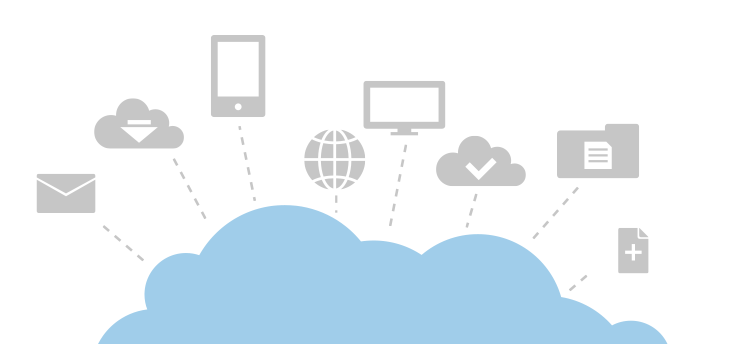
Google Drive is not dead...ya'll need Jesus...
All morning I see announcements that Google Drive is dead. It’s not dead! Come on tech blogs…find actual news. Google has announced it will be discontinuing it’s PC & Mac sync application and replacing it with a new app called Backup & Sync. That’s it. No cloud falling from the sky. No weather map with sections labeled “catastrophic”. No change to your daily life. Uninstall one app, install the other, same thing happens. 😳
Google Drive is alive and well and will continue to provide you with cloud-based storage for all your stolen movies and nude photo collections. You won’t have to delete or re-upload any of your porn or warez. Pr0nSw0rdz rejoice! The new app will change the way it slurps your files from your local machine and pushes to Google’s cloud service. It will also merge what use to be Drive and Photo’s into a uniform app that makes it easier for you to use Drive for all your cloud-based needs. PLEASE STOP SAYING GOOGLE DISCONTINUED DRIVE. Android, Chromebooks, GMail and Google Docs are founded on the principle of cloud-storage. If Google was canceling Drive it would mean they’d also be crippling all their other services. It’s not going anywhere…
That being said…let’s quickly talk workflow…
A lot of people don’t utilize Dropbox, Drive, Box, OneDrive, iCloud or Amazon Drive in the right way. All these services have two ways of operating:
Sync
You load an app on all your devices (mobile and PC) and the app copies files from your PC’s to the cloud, copies files to your PC’s from the cloud, and allows the mobile devices to work off the cloud copy directly. This means if you have (2) computers and a phone, you actually have (3) copies of the same files. (1) on your first computer. (1) on your second computer. (1) on the cloud itself. Pretty nice for backup-sake. That said, that also means you need to have enough storage on all your computers for all your cloud files. It also means there’s a delay in getting changes, new files, etc. The whole process is a glorified version of RSync or Microsoft Briefcase (from Windows 95!).
Unless you’re working on the phone or a mobile device, you’re not actually working off the cloud at all. You’re working off a local file on your HD and having it sync to the cloud at a quick interval. This means you’re still vulnerable to HD crashes, file corruptions, etc. Imagine backing up your files to a USB drive with a really long cord all the way to Google or Dropbox’s office. It’s no different. Just less of a tripping hazard.
Cloud-Based (Web-based)
Working directly from the cloud is something no device can truly do. There’s not a quick and secure way to open files, photos or multimedia remotely. There’s things like SMB, WebDAV, AFP and NFS, but these have been around a very long time. They allow us to work off network drives, but the caveat is, they’re only useable from a local network. They work horrendously (or extremely insecurely) through the Internet.
Unless you have a VPN and a huge pipe from your PC to Google or Dropbox’s office, it’s unrealistic to think you’ll be able to truly use a remote file. Cloud provider’s have cloaked this by providing methods to download a local copy of the file in the background, allow you to work, then sync it back up to the cloud without the user really knowing the difference. The only issue is, it’s a slow process. You can’t double-click and work like normal. It feels sluggish, it fails, sometimes it corrupts…it’s not a great solution. Mobile devices make use of this methodology because you’re typically not expecting a desktop experience from your phone. The fact that it works at all is impressive enough. For this reason, no one has really come up with a better way.
There’s also pseudo web-based tools Microsoft has had for years. Sharepoint. You navigate through files remotely (through the web) but then go through the same download, work, upload process when you need to work on files. There’s previews and a lot of other features that happen directly between you and the cloud, but creating files still happens locally.
Enter Google Docs; Web technologies have advanced so much that you can now run a full productivity suite in a browser! No local app, no local file. This means you can truly work online and avoid the whole conflict of local files. This being said, these tools need to be created from the ground up. They share very little with their app-based counterparts, and can’t always accomplish the same level of sophistication. They also require a constant connection to the Internet. Google was the first to adopt this mentality and offer up Docs as an alternative to Microsoft Office. There’s millions of companies making use of this today. The benefit…true cloud-based processing. No local files. No need for local storage. Complete freedom of local technology. The solution is so slick, Microsoft and Apple have begun converting their apps to web-based versions as well, albeit watered-down and not yet fully fleshed out.
It’s not all roses and sunshine. You need to transition entirely. You cannot use web-based tools to open local files. The issue is reversed if attempted…you upload, work, and download again. 😳 I’m not kidding. It’s the same conundrum in the exact opposite fashion. To avoid this you need to work entirely off-the-cloud. The alternative is sync. There’s no in-between. For this reason, people who use Docs hate Office. For those who use Office, Docs is a nightmare. To migrate one way or another, you need to be comfortable with working entirely out of the browser.
So what do we do?
There’s no clear way forward. Personally, I prefer the cloud-based method. I feel like the future of productivity and tech is working out of the cloud. It promotes collaboration and freedom from the office. Unfortunately I don’t work in a bubble. My counterparts and clients work in other ways. For this reason, I have to be able to do both. This created havoc on how to use Google Drive, Dropbox or Office365. Sometimes I’m in the browser, sometimes I’m on the PC. This means I also can’t solely use an iPad or Chromebook. I also can’t plant roots on where I want my files to live. It’s depressing and an exercise in frustration.
The same exists for those who prefer the app-based route. You can’t always have collaboration locally. This means loading up your PC with files you don’t always need (via sync’ing) and signing up for Docs when a client sends you a link to a file on the cloud. It’s the same frustration in reverse.
The fact of the matter is, until workflow issues are solved or unified, user’s will always have this half-baked experience working “off the cloud”. It’s neat when it works. It’s nice to have. It keeps our stuff safe. But when real work has to be done, it’s usually more of a problem than a benefit. Each year companies get better at managing people’s workflow and file storage. As soon as technology catches up to the human-created problem…it’ll be a dream come true.
…but Google Drive is here to stay. Stop scaring people.


